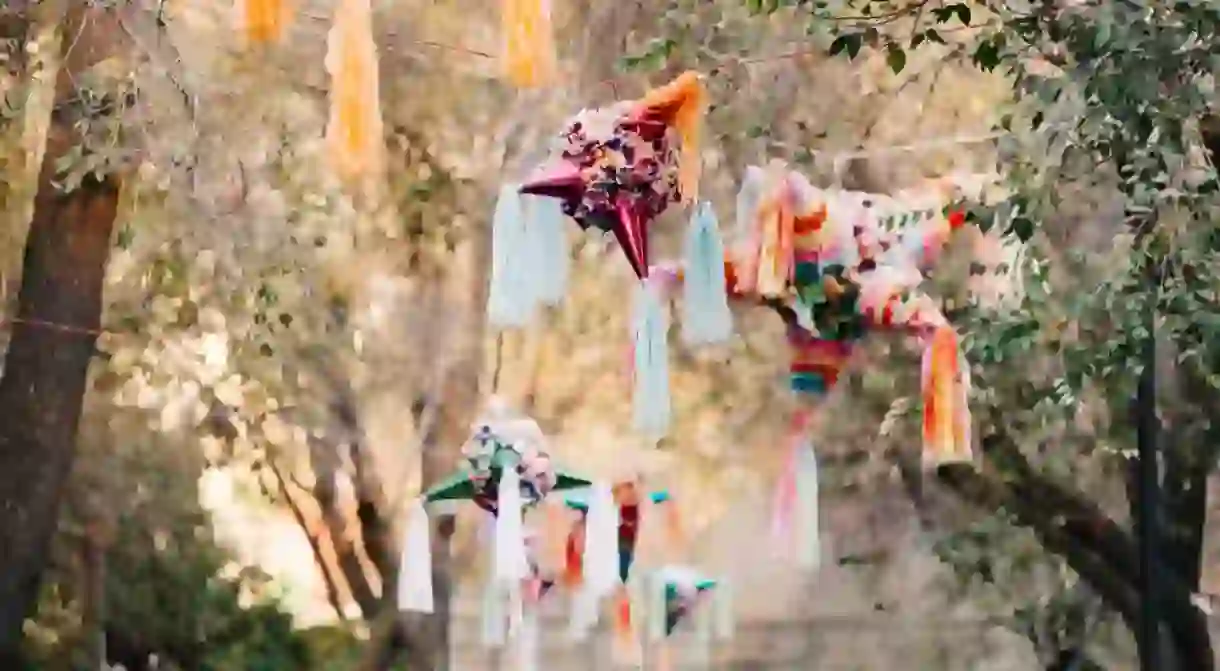Here's Why this Mexican Village is a True Piñata Paradise

Traditionally filled with candy or fruit, hanging piñatas are a key ingredient of any Mexican birthday party. However, the piñata is much more than a decorative container and the ritualistic game of destroying it with a stick is loaded with religious symbolism that provides a vital link to the country’s past.
The piñata town
Today, the tradition of making piñatas by hand is still alive and flourishing in Mexico, especially in the sprawling State of Mexico, which has several towns with a thriving year-round piñata economy. The village of San José Buenavista, a 70-minute drive from Mexico City, is one such town. Piñata production has taken over local industries and there are countless workshops dedicated to the craft. In fact, the town’s human population of 1,000 people is outnumbered by its vast quantity of piñatas.
Traditionally made from clay containers covered in feathers, piñatas have roots in the Aztec tradition of destroying pots in honor of Huitzilopochtli, the god of war. This ritual was later adapted by Spanish missionaries and recreated with new religious symbolism.

Piñatas were made in the form of a seven-coned star, with each cone representing one of the seven deadly sins. The destruction of the piñata symbolized the triumph of good over evil, while the blindfold symbolized faith, which must always be kept strong.
Today, this religious significance has largely been lost, but the ritual itself is still incredibly popular. Each blindfolded participant takes turns striking the piñata with a wooden stick. As the participant tries to strike the piñata, another person moves it around to make the game more difficult. The other participants join in by singing a song, which also marks the time limit for the current player’s turn.
Modern piñatas are made with papier-mâché instead of clay, which can be dangerous. They often depict characters from popular movies and cartoons such as The Lion King, Toy Story, or the Teenage Mutant Ninja Turtles. However, the use of this imagery has prompted copyright complaints from Disney, who has been largely unsuccessful in its campaign because the piñatas are mostly handmade and sold in local markets.

The Piñata King
The photographic collective Tripod City, a collaboration between Paul Storrie, Charlie Kwai, and Chris Lee, recently released a film set in San José Buenavista.
They began filming toward the end of their stay in Mexico, where they were working on a photography project.
“We wanted to do some work in Mexico because of the kind of stereotypes that seem to be placed upon it,” Storrie told National Geographic. “We look for that, so we can challenge those stereotypes, create an alternate depiction of that place—show it as it is at street level.”
A friend of a friend had mentioned the town and its piñata-based economy to the filmmakers and the group found the idea too fascinating to resist. Their video focuses on Francisco Reyes, one of the town’s expert piñata craftsmen.
“He was so casual, so nice and welcoming,” Storrie said. “I’m not even sure if he knew we were coming. But he went along with it anyway.”
Once the filming was finished, the group gave a parting gift to Reyes’ children and friends—a Dora the Explorer piñata—which they took considerable pleasure in destroying.














